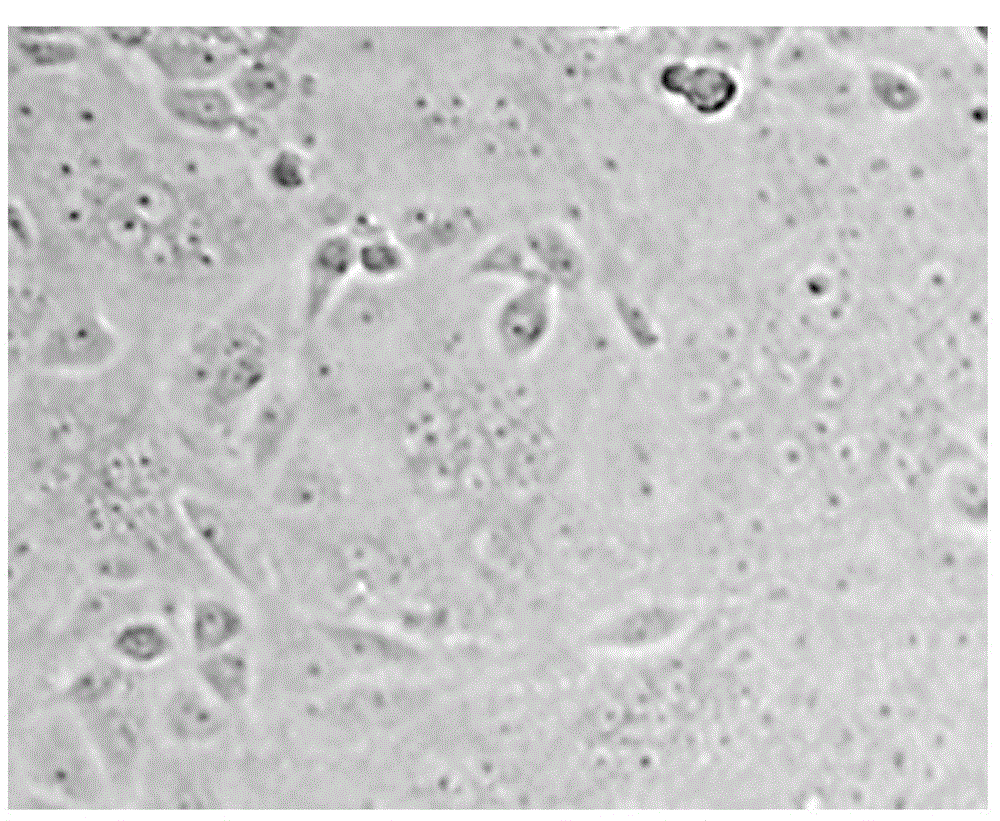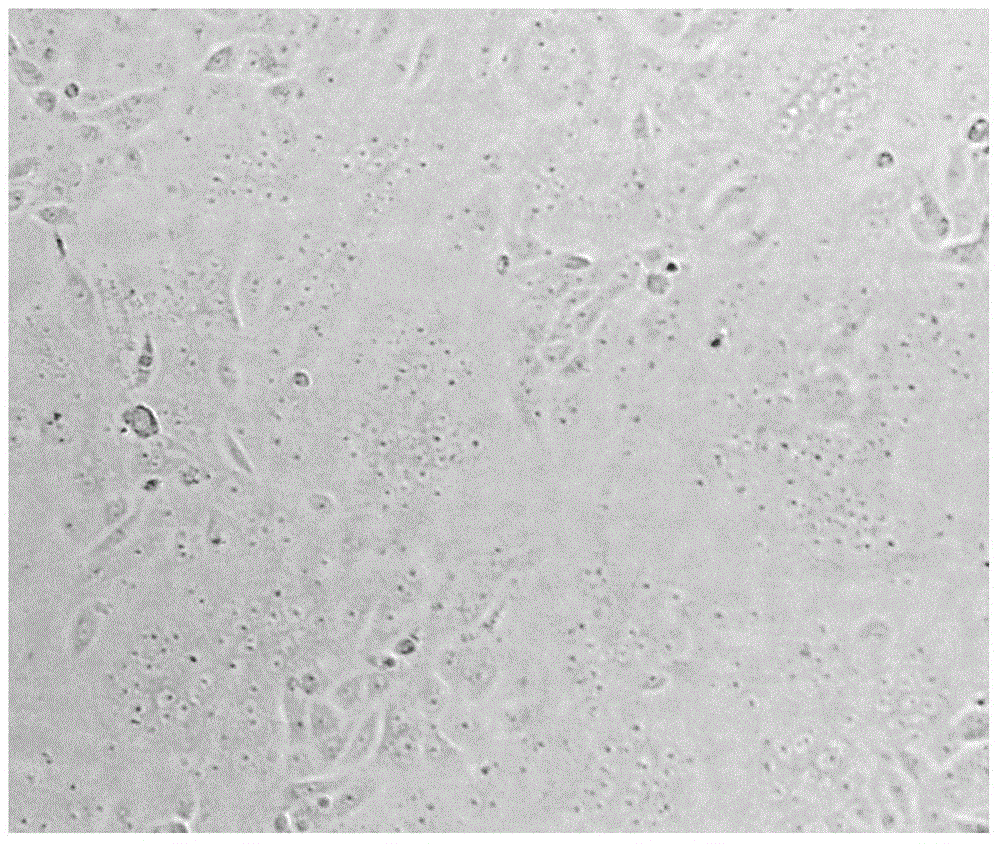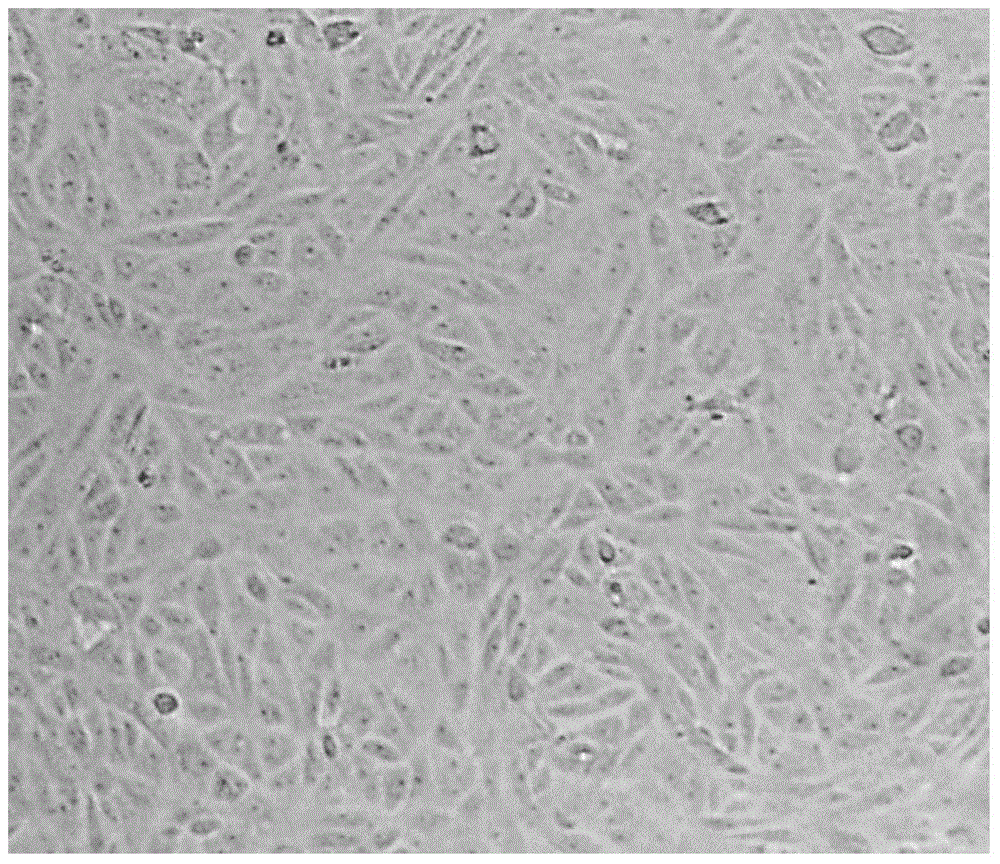Method for culturing porcine epidemic diarrhea virus
A technology of porcine epidemic diarrhea and culture methods, applied in the direction of microorganism-based methods, viruses/bacteriophages, biochemical equipment and methods, etc., which can solve the problems of difficult cultivation of wild strains
- Summary
- Abstract
- Description
- Claims
- Application Information
AI Technical Summary
Problems solved by technology
Method used
Image
Examples
Embodiment 1
[0044] (1) Preparation of DMEM medium: Dissolve DMEM dry powder in deionized water, stir until completely dissolved, adjust the pH value to 7.2, and sterilize and filter with a sterile filter membrane of ≤0.22 μm, and place it in a temperature of ≤4°C Refrigerator for standby use;
[0045] (2) adding the fetal bovine serum that accounts for 1-8% of the volume of the DMEM medium in the above-mentioned DMEM medium, and placing the DMEM medium in the culture vessel to carry out the cultivation of Vero monolayer cells;
[0046] (3) Discard the DMEM medium in the culture vessel where the monolayer cells are formed, and wash 2-3 times with a washing solution; the washing solution is sterile deionized water.
[0047] (4) Discard the washing solution, and add porcine trypsin, cell affinity agent and DMEM medium in step (1) to the culture vessel formed with monolayer cells, wherein the consumption of porcine trypsin is the volume consumption of DMEM medium 0.3% of DMEM, and the dosage o...
Embodiment 2
[0050] (1) Preparation of DMEM medium: Dissolve DMEM dry powder in deionized water, stir until completely dissolved, adjust the pH value to 6.8, and sterilize and filter with a sterile filter membrane of ≤0.22 μm, and place it in a temperature of ≤4°C Refrigerator for standby use;
[0051] (2) adding the fetal bovine serum that accounts for 1-8% of the volume of the DMEM medium in the above-mentioned DMEM medium, and placing the DMEM medium in the culture vessel to carry out the cultivation of Vero monolayer cells;
[0052] (3) Discard the DMEM medium in the culture vessel where the monolayer cells are formed, and wash 2-3 times with a washing solution; the washing solution is sterile deionized water.
[0053] (4) Discard the washing solution, and add porcine trypsin, cell affinity agent and DMEM medium in step (1) to the culture vessel formed with monolayer cells, wherein the consumption of porcine trypsin is the volume consumption of DMEM medium 0.1% of DMEM, and the dosage...
Embodiment 3
[0056] (1) Preparation of DMEM medium: Dissolve DMEM dry powder in deionized water, stir until completely dissolved, adjust the pH value to 7.8, and sterilize and filter with a sterile filter membrane of ≤0.22 μm, and place it in a temperature of ≤4°C Refrigerator for standby use;
[0057] (2) adding the fetal bovine serum that accounts for 1-8% of the volume of the DMEM medium in the above-mentioned DMEM medium, and placing the DMEM medium in the culture vessel to carry out the cultivation of Vero monolayer cells;
[0058] (3) Discard the DMEM medium in the culture vessel where the monolayer cells are formed, and wash 2-3 times with a washing solution; the washing solution is sterile deionized water.
[0059] (4) Discard the washing solution, and add porcine trypsin, cell affinity agent and DMEM medium in step (1) to the culture vessel formed with monolayer cells, wherein the consumption of porcine trypsin is the volume consumption of DMEM medium 0.5% of DMEM, and the dosage...
PUM
 Login to View More
Login to View More Abstract
Description
Claims
Application Information
 Login to View More
Login to View More - Generate Ideas
- Intellectual Property
- Life Sciences
- Materials
- Tech Scout
- Unparalleled Data Quality
- Higher Quality Content
- 60% Fewer Hallucinations
Browse by: Latest US Patents, China's latest patents, Technical Efficacy Thesaurus, Application Domain, Technology Topic, Popular Technical Reports.
© 2025 PatSnap. All rights reserved.Legal|Privacy policy|Modern Slavery Act Transparency Statement|Sitemap|About US| Contact US: help@patsnap.com



